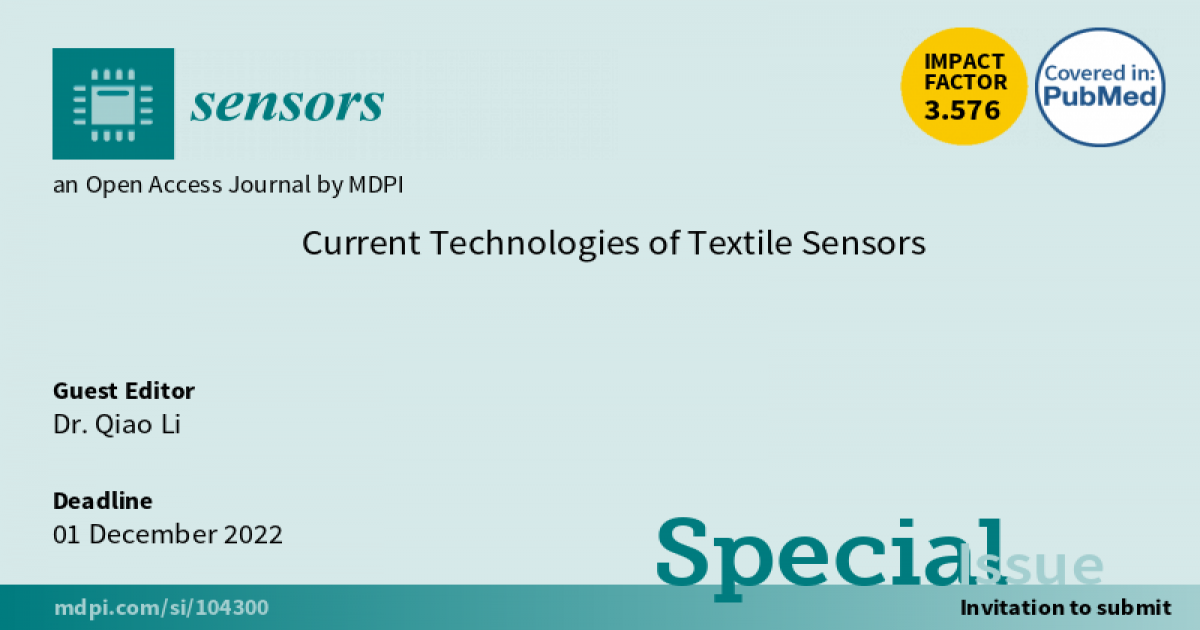Current Technologies of Textile Sensors
A special issue of Sensors (ISSN 1424-8220). This special issue belongs to the section "Sensor Materials".
Deadline for manuscript submissions: closed (1 December 2022) | Viewed by 3330

Special Issue Editor
Special Issue Information
Dear Colleagues,
Samrt textiles and flexible sensors have recently emerged as a new interest from both industry and academia. Textile materials are soft, malleable, and permeable, allowing for significant advances toward the development of wearable sensors made from fiber-based materials. The current textile sensors are made by invloving sensing materials into fibers, yarns or fabrics. The created sensors could detect different stumuli, such as temperature, mechanical deformation, humidity, and so on. The textile sensors have potential uses in diverse fields, such as healthcare, robotics, and human-machine interaction. To demonstrate the current technologies in this rapidly developing field, this special issue will present contributions from experts in the field.
Potential topics include, but are not limited to:
- fiber/yarn/fabric sensors
- pressure/strain/temperature/or any types of sensors
- application of textile sensors,
- mechanicsm of textile sensors,
- flexible sensing networks
Dr. Qiao Li
Guest Editor
Manuscript Submission Information
Manuscripts should be submitted online at www.mdpi.com by registering and logging in to this website. Once you are registered, click here to go to the submission form. Manuscripts can be submitted until the deadline. All submissions that pass pre-check are peer-reviewed. Accepted papers will be published continuously in the journal (as soon as accepted) and will be listed together on the special issue website. Research articles, review articles as well as short communications are invited. For planned papers, a title and short abstract (about 100 words) can be sent to the Editorial Office for announcement on this website.
Submitted manuscripts should not have been published previously, nor be under consideration for publication elsewhere (except conference proceedings papers). All manuscripts are thoroughly refereed through a single-blind peer-review process. A guide for authors and other relevant information for submission of manuscripts is available on the Instructions for Authors page. Sensors is an international peer-reviewed open access semimonthly journal published by MDPI.
Please visit the Instructions for Authors page before submitting a manuscript. The Article Processing Charge (APC) for publication in this open access journal is 2600 CHF (Swiss Francs). Submitted papers should be well formatted and use good English. Authors may use MDPI's English editing service prior to publication or during author revisions.
Keywords
- textile sensor
- sensing array or network
- wearable application
- healthcare
- smart textile
- mechanism
Benefits of Publishing in a Special Issue
- Ease of navigation: Grouping papers by topic helps scholars navigate broad scope journals more efficiently.
- Greater discoverability: Special Issues support the reach and impact of scientific research. Articles in Special Issues are more discoverable and cited more frequently.
- Expansion of research network: Special Issues facilitate connections among authors, fostering scientific collaborations.
- External promotion: Articles in Special Issues are often promoted through the journal's social media, increasing their visibility.
- Reprint: MDPI Books provides the opportunity to republish successful Special Issues in book format, both online and in print.
Further information on MDPI's Special Issue policies can be found here.






